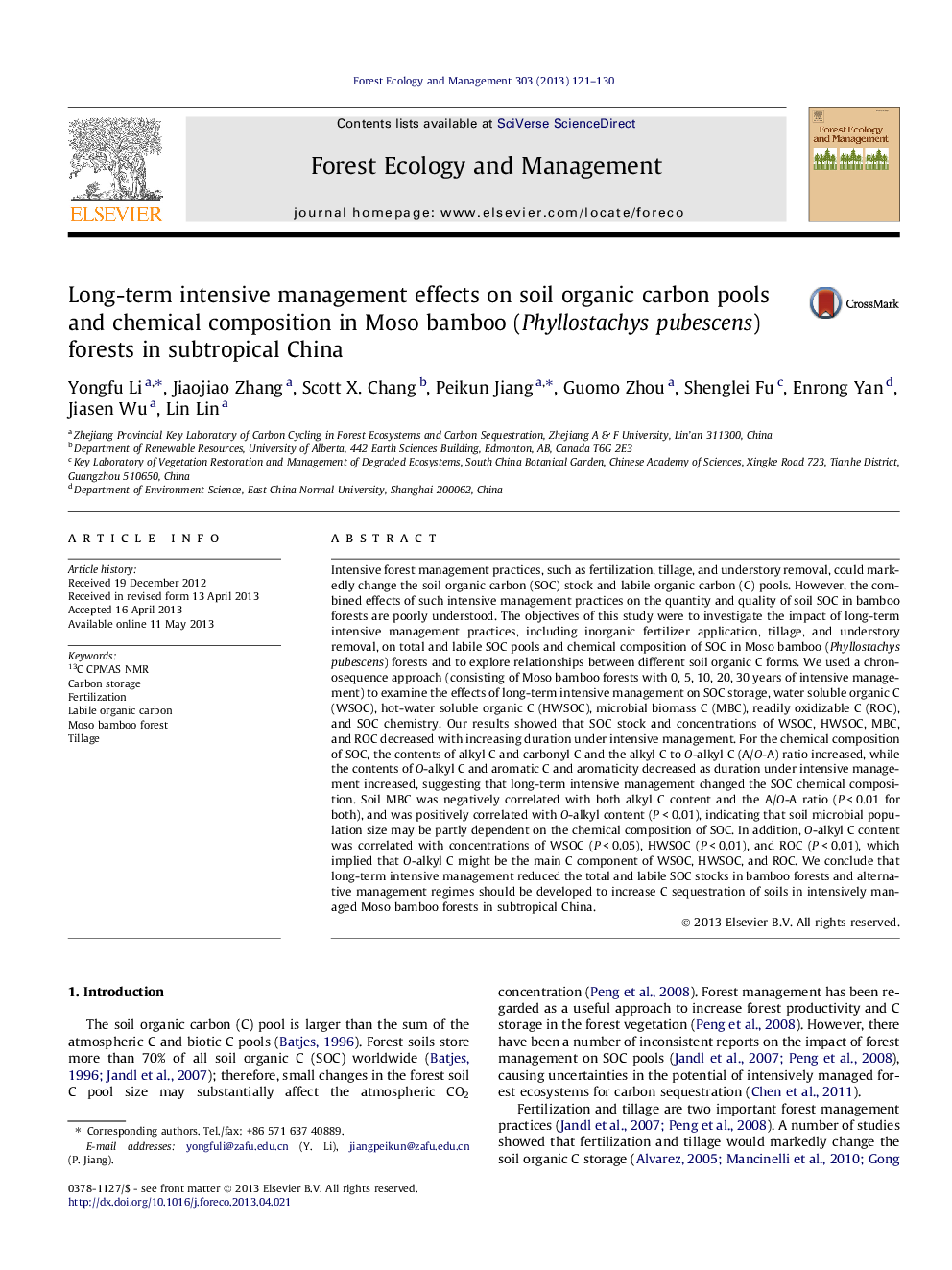| Article ID | Journal | Published Year | Pages | File Type |
|---|---|---|---|---|
| 86743 | Forest Ecology and Management | 2013 | 10 Pages |
•Long-term fertilization, tillage, and understory removal decreased C pools.•Such practices also changed the chemical composition of soil organic C.•Labile organic C pools were linked to the chemical composition of soil organic C.•Alternative management practices may increase soil organic C storage.
Intensive forest management practices, such as fertilization, tillage, and understory removal, could markedly change the soil organic carbon (SOC) stock and labile organic carbon (C) pools. However, the combined effects of such intensive management practices on the quantity and quality of soil SOC in bamboo forests are poorly understood. The objectives of this study were to investigate the impact of long-term intensive management practices, including inorganic fertilizer application, tillage, and understory removal, on total and labile SOC pools and chemical composition of SOC in Moso bamboo (Phyllostachys pubescens) forests and to explore relationships between different soil organic C forms. We used a chronosequence approach (consisting of Moso bamboo forests with 0, 5, 10, 20, 30 years of intensive management) to examine the effects of long-term intensive management on SOC storage, water soluble organic C (WSOC), hot-water soluble organic C (HWSOC), microbial biomass C (MBC), readily oxidizable C (ROC), and SOC chemistry. Our results showed that SOC stock and concentrations of WSOC, HWSOC, MBC, and ROC decreased with increasing duration under intensive management. For the chemical composition of SOC, the contents of alkyl C and carbonyl C and the alkyl C to O-alkyl C (A/O-A) ratio increased, while the contents of O-alkyl C and aromatic C and aromaticity decreased as duration under intensive management increased, suggesting that long-term intensive management changed the SOC chemical composition. Soil MBC was negatively correlated with both alkyl C content and the A/O-A ratio (P < 0.01 for both), and was positively correlated with O-alkyl content (P < 0.01), indicating that soil microbial population size may be partly dependent on the chemical composition of SOC. In addition, O-alkyl C content was correlated with concentrations of WSOC (P < 0.05), HWSOC (P < 0.01), and ROC (P < 0.01), which implied that O-alkyl C might be the main C component of WSOC, HWSOC, and ROC. We conclude that long-term intensive management reduced the total and labile SOC stocks in bamboo forests and alternative management regimes should be developed to increase C sequestration of soils in intensively managed Moso bamboo forests in subtropical China.
